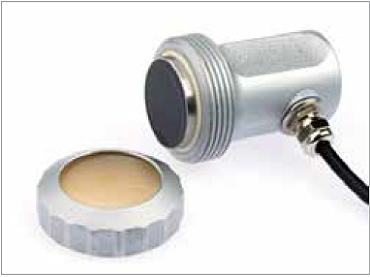
Threaded Bolt Crack and Corrosion Mapping
Thread degradation: corrosion, defects, cracking
In this article:
- Phased Array Ultrasonic Testing for Threaded Bolts: Baker Hughes developed a non-destructive testing solution using phased array ultrasonic testing (PAUT) to detect cracks, corrosion, and defects in threaded bolts without disassembly
- 360° Sector Scanning for Full Thread Coverage: The inspection method involves rotating a straight beam phased array probe around the bolt to generate a complete sector scan, revealing thread degradation with high resolution
- Enhanced Signal Detection for Corrosion Mapping: Corroded areas are identified by increased reflection signals in the scan, enabling precise localization of damage and improved maintenance decision-making
- Durable Probe Design for Rough Surfaces: The probe features a non-abrasive protective membrane that ensures consistent coupling on rough surfaces, extending probe life and improving measurement reliability
- Ideal for Structural Integrity Monitoring: This solution supports regular inspection of critical infrastructure components—such as bridges, offshore platforms, and buildings—ensuring long-term safety and performance
Threaded bolts are an essential part of any large construction such as bridges, offshore platforms and even buildings. To ensure the structural integrity of such large structures the full volume of the bolt, especially the threaded area should be evaluated on a regular basis. A simple phased array exam may be performed without dismounting the bolts.
The phased array image is capable of readily displaying thread degradation such as corrosion, defects and cracking and facilitates the decision making process for further action.
The detection of corrosion within the threaded area is preferably carried out using the sector scan of straight beam phased array probes. The probe is rotated by 360° on the bolt such that the sector scan fully covers the threads. The lefthand figure displays such a sector scan, in which single threads are resolved and the corroded area is detected by a significantly increased reflection signal (red area). To ensure steady and uniform coupling, the probe features uses a non-abrasive protective membrane allowing for coupling on rough surfaces and increasing the probes’ lifetime. These features result in an improved measurement, reliability and accuracy.
Product Features
• To ensure steady and uniform coupling, the probe features use a non-abrasive protective membrane allowing for coupling on rough surfaces and increasing the probes’ lifetime
• High quality inspection and probability of detection
• Reduce construction failures and potential liability
• Straight beam contact phased array probes B4SPA16 or MB4SPA16
• Mentor UT Phased Array Flaw Detector - P/N 100N3883
• Also operational on other commercially available phased array instruments © 2018

